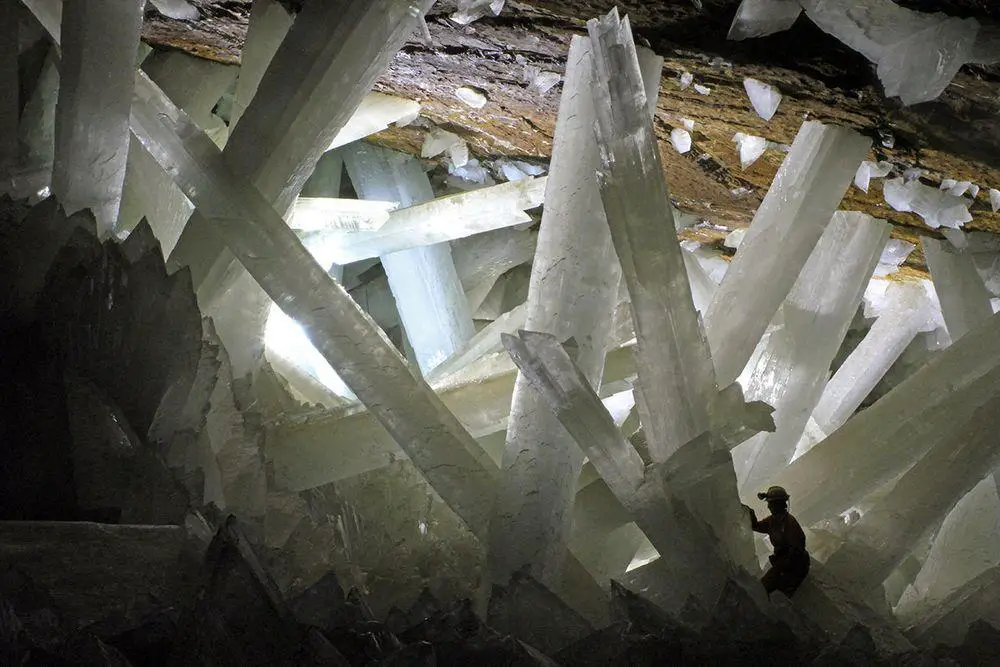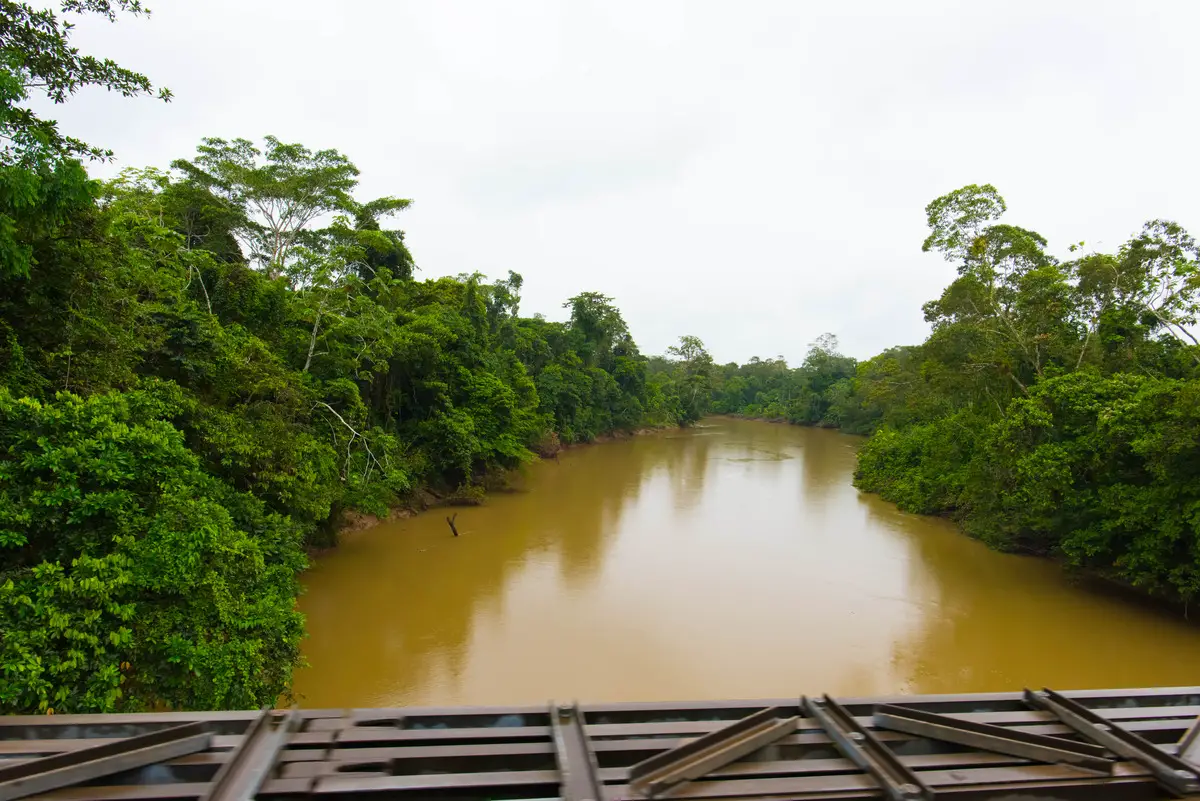Wonder
Goualougo Triangle – the realm of chimpanzees
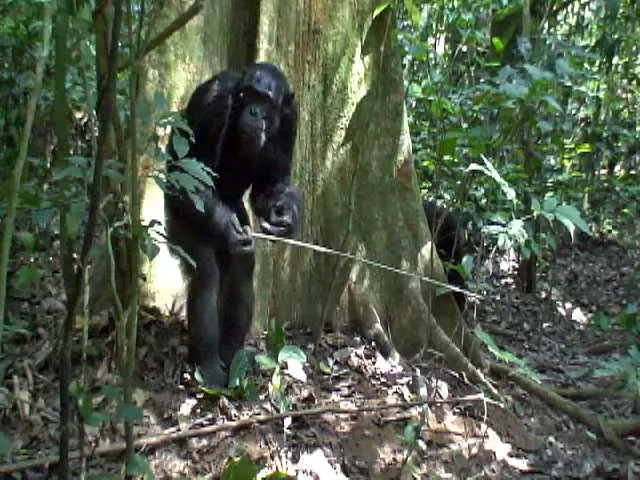
 In short
In short
There is a unique forest in a faraway corner of the Republic of Congo. This forest – nicknamed Goualougo Triangle – is pristine. People never lived here and animals don’t fear people. Most amazing are the local chimpanzees – nowhere else on Earth apes have developed as much as here.
 46.0%
46.0%
GPS coordinates
Location, address
Area
Dominating species
Map of the site
If you see this after your page is loaded completely, leafletJS files are missing.
 In detail
In detail
The most remote part of Congo jungle?
Some of the most remote and intact equatorial forests are found in the area near the junction of the borders of the Republic of Congo, Cameroon, and the Central African Republic. Here has developed one of the most biodiverse ecosystems in the world – the Congo lowland forest.
Up to this day, this is an immense forest with scattered villages of pygmy people, rich with legends about unusual animals – such as the terrible mokele-mbembe in Lake Tele. Of course, occasional poachers and logging companies are encroaching on these forests as well, and step by step the virginity of this forest is receding.
The missing part of Nouabale-Ndoki National Park
This forest is protected by several protected natural territories. One of them – Nouabale-Ndoki National Park – was created in 1991-1993. The southern border of this national park initially was just a direct line – the local logging company “Congolaise Industrielle des Bois” (CIB) – did not want to see it included in the park because they had a logging concession there. After all this forest is rich with mahogany and other valuable hardwoods – one can make a good profit from it.
Around 1995 the explorers heard the first rumors about a location in the forest south of the national park where animals do not fear people. Soon after researchers managed to pass the dense forest and swamp and reached the equatorial forest between Ndoki (to the southwest) and Goualougo (to the southeast) rivers and their discoveries here have been sensational.
By 1999 there was set up an ape research station, initially by Dave Morgan but soon after he was joined by Crickette Sanz and other scientists and local enthusiasts. Step by step scientists and environmentalists managed to persuade the logging company to abandon its plans to start logging here. In 2001 this unusual forest – Goualougo Triangle – was included in Nouabale-Ndoki National Park.
The pristine forest of Goualougo Triangle
Goualougou Triangle is an absolutely pristine forest where people, most likely, have never lived and few have ever visited it. Even hunters have not reached it. The closest human settlement is Bomassa pygmy village 55 km away.
This equatorial forest has stable climatic conditions – medium temperature here throughout the year is 22 °C.
Here live numerous rare animals and plants, including forest elephants, and western lowland gorillas, but especially common are central (common) chimpanzees. This land is well suited for great apes as the forest supplies them with a huge variety of diverse fruits little known outside this region, such as Treculia africana.
Unique population of chimpanzees
It is assessed that in Goualougo Triangle live some 450 – 750 chimpanzees and some 700 – 1000 gorillas. Contrary to other populations of these animals, here they, at least chimpanzees are constantly innovating and learning new technologies by themselves.
Fearlessness and curiosity
Local animals have not learned the dark side of human nature. Thus chimpanzees and other animals are curious and not afraid to meet humans, they do not escape. Often the opposite happens – chimpanzees are curious and call others to come and look at humans. Sometimes it is hard to get rid of them: people get bored but chimpanzees still look at humans as unseen and weirdly similar creatures. Never before researchers have seen such behavior in chimpanzees. Everywhere else apes are just escaping the humans – and, in order to research them, explorers need years to habituate them.
Human diseases are dangerous to chimpanzees. No doubts, uncontacted groups of chimpanzees have no immunity against most of these diseases. Thus researchers approach apes with surgical masks – to protect the apes from possible illness.
Researchers have decided to habituate just a few groups of local chimpanzees while other great apes in this forest will be less in contact.
The most sophisticated culture of great apes on Earth
Chimpanzees in the Goualougo triangle have one more unusual trait – they have a lot more sophisticated culture of toolmaking than any other population of chimpanzees in the world. Local chimpanzees are purposefully selecting the right sticks or any other tools best suited for their intended activities, e.g. picking out the ants from anthills or getting the honey from tree hollows. Chimpanzees adjust their tools, for example, chew the twigs to get brushes for a better collection of ants.
If they find an especially comfortable tool, apes bring it from one known nut-bearing tree to another finally leaving it at the tree for repeated use. Researchers have observed also that chimpanzees teach their skills to others and how young chimpanzees learn from the elder ones.
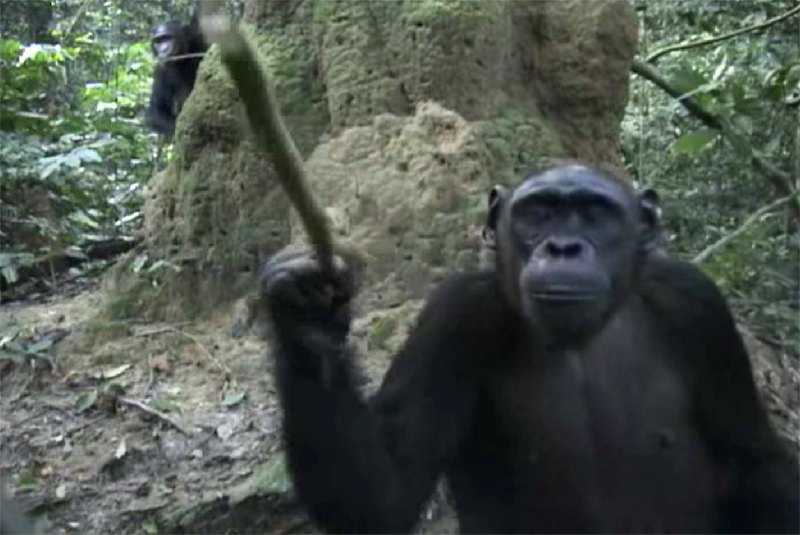
Thus far this is the only place on Earth where humans can observe how another species of animals is innovating and learning new technologies by itself. Elsewhere these great apes have no possibility to evolve like this because there is less social tolerance as the apes are persecuted and their behavior is influenced by the constant escape from humans or permanent loss of equilibrium between the groups of animals due to logging or hunting. In socially intolerant conditions the younger generation of apes has no possibility to learn all the skills from the elder generation. They can not continue innovations, based on the previous achievements of their ancestors.
Goualougo triangle and human nature
This makes us think about ancient humans – after all, they had such a possibility to evolve and innovate. The miraculous forest of the Goualougo Triangle may provide some answers about the behavior of early humans.
Unfortunately, this “Last Eden” is endangered – step by step poachers and loggers approach this pristine land. The area around the Goualougo Triangle still is mostly pristine, but if it will be logged, also Goualougo Triangle will change, even if left untouched.
References
- Goualougo Triangle Ape Project, accessed in 5th November 2018
- Joshua Foer, The Truth About Chimps, National Geographic, February 2010
- Crickette M. Sanz, David B. Morgan. The social context of chimpanzee tool use. Accessed in 5th November 2018
Goualougo Triangle is included in the following articles:
 Linked articles
Linked articles

Wonders of Republic of the Congo
The Republic of Congo is an exotic country with diverse landscapes. Most of the country is covered with pristine rainforest and in some parts of the country humans have never lived – and don’t live up to this day.
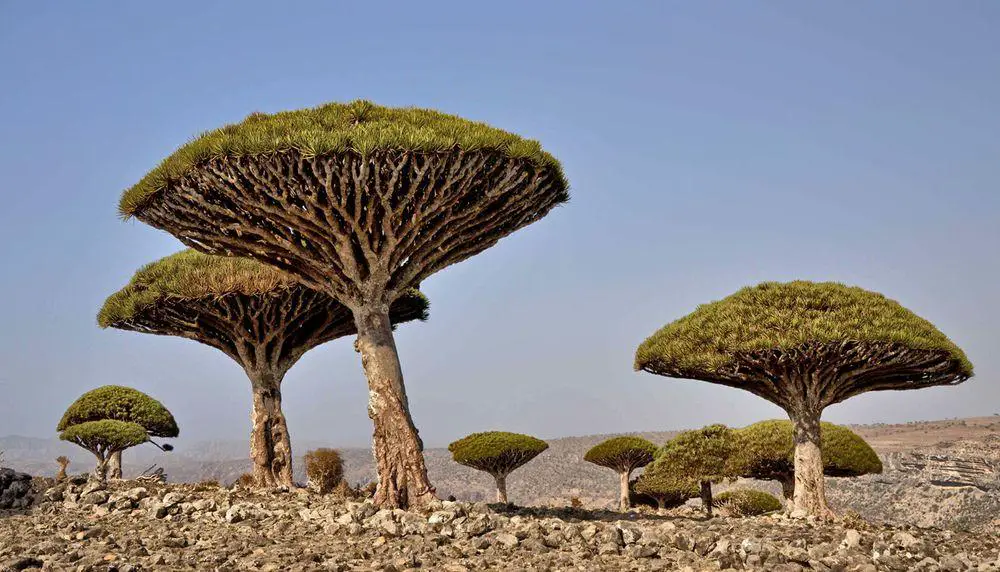
Ecosystems
Biotope is a rather small area with uniform environmental conditions and a specific community of life. Wondermondo describes biotopes and ecosystems which have striking looks, look very beautiful, or have other unusual characteristics.
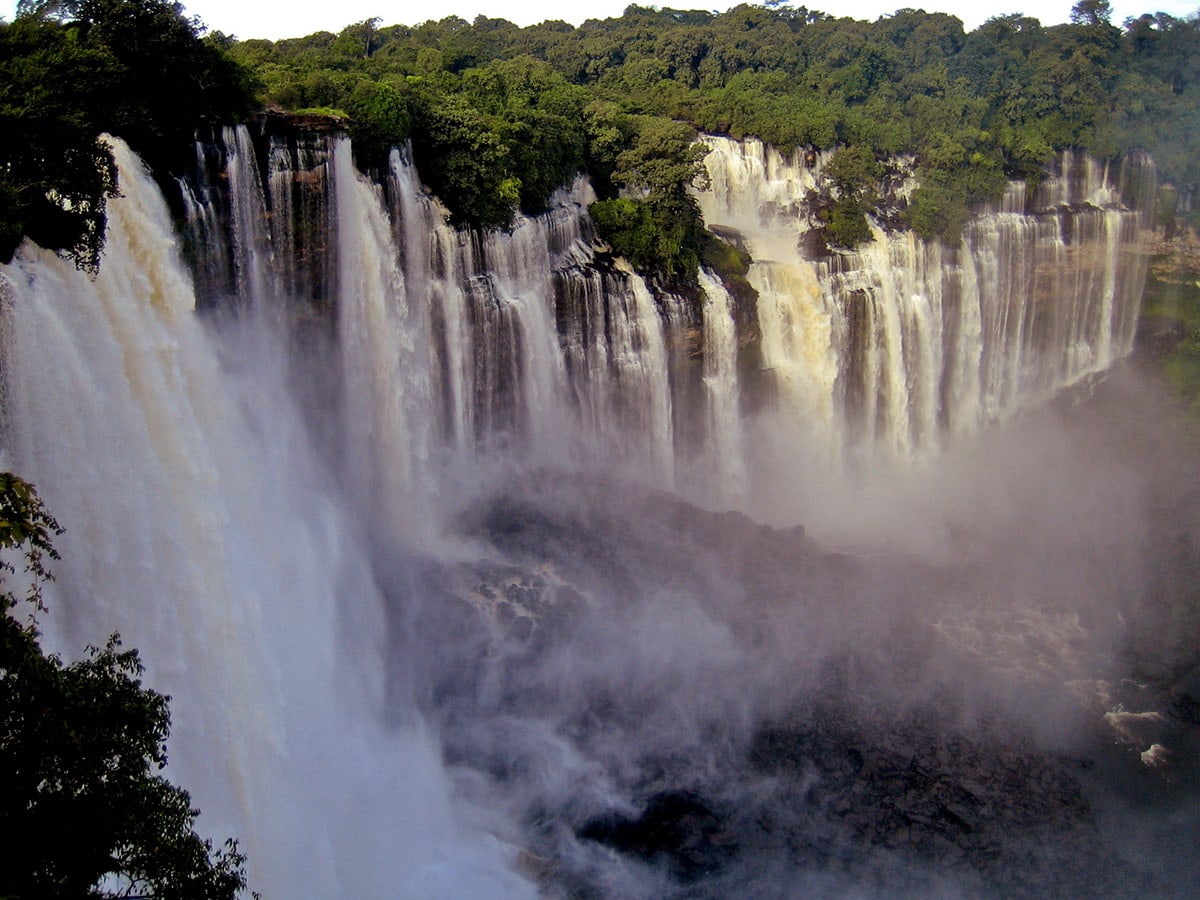
Wonders of Africa
Africa has many outstanding wonders and some of the most surprising ones are the heritage of Egyptian civilization, the vernacular architecture of the Sahel region, tropical ecosystems, and others.
 Recommended books
Recommended books
My Life with the Chimpanzees
From the time she was a girl, Jane Goodall dreamed of a life spent working with animals. Finally, she had her wish. When she was twenty-six years old, she ventured into the forests of Africa to observe chimpanzees in the wild. On her expeditions, she braved the dangers of leopards and lions in the African bush. And she got to know an amazing group of wild chimpanzees — intelligent animals whose lives, in work and play and family relationships, bear a surprising resemblance to our own.
Emerald Labyrinth : A Scientist’s Adventures in the Jungles of the Congo
Emerald Labyrinth is a scientist and adventurer’s chronicle of years exploring the rainforests of sub-Saharan Africa. The richly varied habitats of the Democratic Republic of the Congo offer a wealth of animal, plant, chemical, and medical discoveries. But the country also has a deeply troubled colonial past and a complicated political present. Author Eli Greenbaum is a leading expert in sub-Saharan herpetology—snakes, lizards, and frogs—who brings a sense of wonder to the question of how science works in the twenty-first century.

